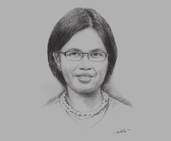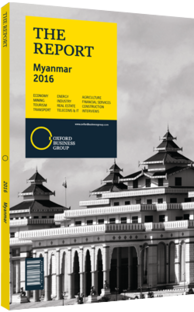Daw Kim Chawsu, Head of International Banking, Kanbawza Bank: Interview

Interview: Daw Kim Chawsu
How can unsecured lending be promoted to assist the development of small and medium-sized enterprises (SMEs) in Myanmar?
DAW KIM CHAWSU: The SME sector has always been very interesting, considering the diverse players in the market. The government has been trying quite hard in the last two years to make sure that this sector becomes more developed. Both the government and the Central Bank of Myanmar (CBM) have undertaken many initiatives, such as training SMEs. Local banks are cooperating with agencies such as GIZ in giving financial literacy classes to the employees of SMEs. We hope that in the future we can tap further into unsecured lending, but that depends more on the government and CBM regulations. Right now, unsecured lending is very difficult. At the same time there are concerns about an asset bubble, with too much dependency on the land. The positive aspect is that the CBM is already starting a credit bureau, and they have been visiting other emerging countries such as Cambodia to try and learn from the model that they have in place there.
Without these institutions in place, the establishment of credit cards and unsecured lending is rather difficult. Until certain regulations are in place, only microfinance institutions will be able to offer unsecured lending, and because of the nature of their business they have a limited reach. To promote the development of SMEs or start-ups, it is vital that their access to affordable capital is improved. In order to achieve this we need to assist with the development of the credit bureau, which will require local banks to share information, a process that has traditionally been an issue in Myanmar.
What measures are local financial institutions taking to increase banking penetration in rural areas?
CHAWSU: Market data shows that approximately 90% of the Myanmar population is unbanked. Some local banks have opted to open up branches in rural areas to increase banking penetration, and many banks now offer mobile technology to help with mobile banking services.
Most of these initiatives will go live in 2016, once the telecoms operators have mapped out the majority of the country. Local banks are also working alongside different agencies such as the UN to assist in the opening of bank accounts across Myanmar. There is, of course, a challenge in educating people about the importance of having a bank account. It will take a concerted effort to give people – particularly those in rural areas – confidence in the banking system, and an understanding that the money they deposit will still be there tomorrow. This can only be achieved by working closely with the customer. I think to gain the trust of the people, it is important to have a bricks-and-mortar branch rather than just mobile solutions.
What potential exists for the establishment of hedging mechanisms to effectively manage exchange rate risk in Myanmar?
CHAWSU: As far as exchange rate management is concerned, hedging is of course something that we need to have in place in the future. There are various mechanisms employed globally that we could one day adopt. It is something that local and foreign banks are trying to work with the central bank to improve.
The CBM has taken certain initiatives to reduce the dollarisation problem, including reducing cash withdrawal limits from $10,000 a day to two withdrawals of $5000 per week, and making sure payments are made in local currencies even at government agencies. A recent initiative was the withdrawal of foreign exchange licences from non-financial institutions such as hotels, airlines and restaurants. The CBM wants less reliance on the dollar within the local market, and they want the kyat to be a lot more dominant. These key factors will assist in currency stability.
You have reached the limit of premium articles you can view for free.
Choose from the options below to purchase print or digital editions of our Reports. You can also purchase a website subscription giving you unlimited access to all of our Reports online for 12 months.
If you have already purchased this Report or have a website subscription, please login to continue.

